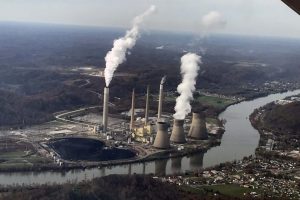 It’s become increasingly clear that climate change is not only real but beginning to bite. Now that much of the population is finally feeling the urgency—and during a time when COVID19 has much of our frenetic commerce on hold, giving us a space for thinking and discussion—what can we do to protect the only planet we’ve got? Unfortunately a good many of the solutions on offer seem designed to quiet the increasing concern, the impetus to do something, without challenging the status quo.
It’s become increasingly clear that climate change is not only real but beginning to bite. Now that much of the population is finally feeling the urgency—and during a time when COVID19 has much of our frenetic commerce on hold, giving us a space for thinking and discussion—what can we do to protect the only planet we’ve got? Unfortunately a good many of the solutions on offer seem designed to quiet the increasing concern, the impetus to do something, without challenging the status quo.
Can we get real solutions and still maintain economic growth, population growth, and the growth of inequality? Are we entitled to an ever-rising standard of living? I believe the answer is no; we need some profound transformations if we are to leave our grandchildren a planet that resembles the one we grew up on, rather than a dystopian Hell world. This is the basic theme of the controversial Michael Moore produced film Planet of the Humans. I see that film as seriously flawed, but agree with its basic message—that it’s time for humanity to grow up and accept limits, get over what I call human exceptionalism, or androtheism—the notion that man is God.
A veritable cornucopia of false solutions is being pushed these days, not only by corporations and think tanks but by the UN’s IPCC, the international body responsible for research and action on climate. We could have made a gentle transition if we had begun when we first became aware of this problem decades ago, but for various reasons we did not. There is no time left for barking up one wrong tree after another; no time to waste in false solutions. Hence this series pointing out the fallacies behind such proposals as electrifying everything, carbon trading, geoengineering or switching to “gas—the clean energy fuel!”
I’ve divided the issue into sectors: electricity generation, transportation, agriculture, buildings, and then there are two sections on false solutions that aren’t part of an energy sector—geoengineering schemes, and some other policy options. Finally, we look at real solutions. I am not an expert on anything except maybe gardening, so my hope is to spur discussion; please do comment in the comments sections for each of the postings.
Mary’s series first ran on Resilience. Photos by Vivian Stockman.
Read the next installment in the series here.









